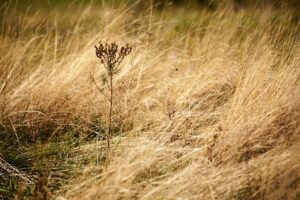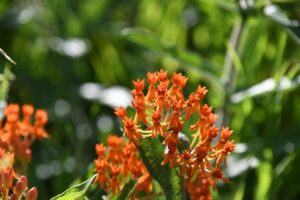This article originally appeared on Ski Mag
The Birds of Prey men’s World Cup races kick off on Friday, Dec. 2 with the first of two downhill races, followed by the second downhill on Saturday, Dec. 3. A super-G wraps up the Beaver Creek World Cup weekend on Sunday, Dec. 4. Tune in live on Outside Watch to see the world’s best speed racers take on North America’s fiercest downhill course. Get all the streaming details here.
Not for nothing is Beaver Creek’s Birds of Prey known as “North America’s Downhill.” There’s the Lake Louise downhill, of course, but if you ask Daron Rahlves, one of the best American speed racers of all time, that track can’t hold a candle to Birds of Prey.
Since the inaugural event in 1995, Birds of Prey has become one of the most exciting downhills on the men’s World Cup circuit, ranking right up there with the Kitzbuhel and Bormio speed races thanks to its course design that encourages racers to ski at their very limits.
We caught up with Rahvles, one of few American racers to repeatedly win the Birds of Prey downhill (along with teammate Bode Miller, with whom he shared the podium in 2004 and 2005) to get the downlow on this track, what makes it unique, and why Americans have struggled in recent years to find success here on home snow.
SKI: What makes the Birds of Prey downhill special?
Daron Rahlves: What makes it unique is that it has all the elements of a real downhill track. It tests your gliding from the top and your tactical skill ability in the turns. It’s just quick right off [course section] the Brink–it has a lot of terrain that comes at you fast, and you have to really anticipate it and be ahead of it. You also have some big jumps. It’s just stacked with action.
It also always excited me because, on the men’s Tour, it’s the real kickoff to the season. Not to take anything away from Lake Louise, but it’s not at that level of Birds of Prey with the speed and the jumps. So Birds of Prey is a wakeup call, especially that first training run.
And as an American, it feels even more important because it’s home turf. This year it’s incredible to have Palisades and Aspen added to the Tour. Usually, it’s just the one race every year at Birds of Prey, then that’s it, you’re on the road.
Profile of the famed Birds of Prey course in Beaver Creek, Colo. (Illustration: Courtesy Vail Valley Foundation)
SKI: Does the course favor more technical downhill skiers, gliders, or those willing to risk it all?
DR: You need to have all of the skill sets to be really competitive at Birds of Prey, but it tends to favor racers who have a good touch [not too harsh on the edge] on aggressive snow. Because it really is that aggressive American snow, which is manmade and colder than the snow you ski on in Europe. So it takes those skills of being really technical and also having good gliding skills.
That’s one thing that Beaver Creek has over any other course, is how well the snow is prepped. It is so fun to ski, it’s like a freshly paved driveway. It’s super smooth, you get crazy good grip.
SKI: In terms of difficulty or fear factor, where would you rank the Birds of Prey downhill course on the men’s World Cup circuit?
DR: For the risk factor, I’d put it in third behind Kitzbuhel and Bormio. Unfortunately, the jump size got smaller over the years [on all downhill courses]. I always thought it was funny when I was racing to find the Austrians chipping down the takeoffs of some of their jumps on their courses. I always thought ‘leave it, if you don’t want the air, stand up.’ I was willing to take the chances, I wanted to go big.
SKI: You and Bode Miller are two of the few American racers who have not only managed to podium in the Birds of Prey downhill, but win it–repeatedly. How did you manage that?
DR: Bode and I definitely had a different line than most, and we’d make up time off the Brink going into the next big turn and into Talon. Then others started catching on, but that’s where we shined quite a bit for a few years. Our line was more aggressive, cutting off more at the top and not carrying as much distance [around the gates].
Daron Rahlves (#31) waves the American flag after his second place finish during the Birds of Prey Downhill in 2004. Teammate Bode Miller (right) won the downhill that year. The following year, the two would trade places, with Rahlves in first and Miller in second in the downhill. (Photo: Brian Bahr/Getty Images)
I always looked at downhill with ‘how much can I get away with with this line,’ then I’d back off a little from there. I looked for places on the course where I could separate myself. I’m always looking for the fall line for a way I can work with the mountain a little more. Gravity is our throttle and the way we ski the mountain makes a difference. That was my challenge for myself: to always ski the ultimate line.
Bode and I weren’t willing to back off. We shared a lot of information [about the course] and it just came down to who was going to be able to ski it better on race day. It’s not fun getting beat by your teammate, especially in the U.S., but it drove me to pull out as much as I could.
SKI: Why do you think the American men have struggled to find that same kind of success on this course in recent years?
DR: I don’t know, I’m kind of questioning that too. The guys now are so skilled and they put a lot of work in, but I think it just comes down to the mental approach and how bad they want it. I know I wanted it so bad and was willing to take all the risk.
Related: Tommy Ford becomes first American to win Birds of Prey GS since Ted Ligety in 2014
Of all our guys, Travis Ganong has a real shot at Birds of Prey. But Travis skis a little too careful at times. He has the ability to not check himself, but he checks himself anyway. And that’s just a mental aspect. I just think our guys have to go in there knowing that they’ve done everything possible to be in that top position. They need to believe it and make it happen.
SKI: What’s the most challenging section of the Birds of Prey course, where do guys get themselves into trouble?
DR: Technically, the course is tougher from the Brink down to the Pumphouse [between Peregrine Jump and Goshawk Jump]. But where I see more mistakes and crashes is after Pumphouse [heading into Goshawk Jump]. That tends to be a tough spot. You’re carrying a lot of speed and guys tend to make mistakes and hit the fence there.
Then it’s Golden Eagle [jump] to the Abyss, because you’re a little more worn-down physically. It’s dark in there and typically you’re dealing with flat light. It’s especially hard on a really sunny day because you go from bright sun into the dark. Actually, the best days are when it’s a little cloudy so you don’t get such a big contrast in light situation. The bottom three jumps are ones to keep an eye on, too, because the guys are tired but carrying a lot of speed.
SKI: Who’s your money on in this year’s Birds of Prey downhill races?
DR: Here are my top 5: Aleksander Aamodt Kilde [NOR], Marco Odermatt [SUI], Vincent Kriechmayr [AUT], Matthias Mayer [AUT], and Beat Feuz [SUI]. You just can’t ever count out Feuz, he’s a machine, just so good.
Aleksander Aamodt Kilde (NOR), Matthias Mayer (AUT), and Beat Feuz (SUI) stormed the podium in the 2021 Birds of Prey downhill. (Photo: U.S. Ski and Snowboard)
Related: Our fantasy ski team is the team to beat all fantasy teams
Kilde, who I’d rank as number one going into Beaver Creek based on his wins in the downhill and super-G last year, he’s a very well-rounded skier. I’ve heard he’s even been skiing good giant slalom, and that really plays a part in being competitive at Beaver Creek. Odermatt [the 2022 GS crystal globe winner], he’s lined up to be really competitive there as well.
You’re going to see probably two of those guys on the podium and three of them in the top 10.
SKI: What about on the American front?
DR: For the downhill I’m going to go with RCS [Ryan Cochran-Siegle]. When he’s on, he’s fast. I’d love to see all of our guys do well and stacked in the top 10, but I think our best shot is with RCS and Travis [Ganong] in downhill and super-G. Travis has a new ski tech on his Atomic skis and he’s feeling really comfortable. Before, the tune was super sharp and too aggressive for him, so he struggled a little bit. He actually has RCS’ tech when he won the Bormio super-G now. In Travis’ eyes, his new tech is the best tech he’s ever had. He seems to be fired up.
Travis Ganong finished 3rd in the Birds of Prey super-G in 2021. (Photo: Dustin Satloff / U.S. Ski and Snowboard)
SKI: How does the Birds of Prey super-G compare to the downhill?
DR: The super-G track is really stacked right out of the start because it’s steep and you have to control speed. That’s one place where Travis does really well because you have to be a tad conservative on the line, because you could blow up your race in the first five turns. You have to be really clean and fighting for the fall line. It’s a fun super-G that really matches up with the terrain well.
SKI: So who has the best chance in the super-G on Sunday?
DR: I’m going to go with Odermatt, Mayer, then Travis. And RCS, you can’t count him out. But Travis has the experience at this point.
For exclusive access to all of our fitness, gear, adventure, and travel stories, plus discounts on trips, events, and gear, sign up for Outside+ today.





